While the famous Inca Trail captures significant attention, the Salkantay Trek is the most popular route, offering an impressive and surprise-filled alternative. You’ll spend several days on the trail with basic provisions far from the city. As such, you must be prepared to face this imposing route’s challenges.
Altitude is crucial in this adventure, leading you to elevated places that will take your breath away. In our definitive guide on how to prepare for the Salkantay Trek to Machu Picchu, we provide valuable tips and strategies to ensure you’re in optimal condition and fully enjoy this unique experience. We will guide you step by step, equipping you with everything necessary so that nothing is lacking during the Salkantay trek.
Your dream journey is about to begin!
- What is the Salkantay Trek?
- Where is Mount Salkantay Located?
- History and Significance of Mount Salkantay
- How hard is the Salkantay trek to Machu Picchu?
- Salkantay Trek Altitude
- Is Acclimatization Necessary for the Salkantay Trek?
- Altitude Sickness on the Salkantay Trek, Peru
- What to See and Do on the Salkantay Trek
- When Is the Best Time to Go
- How to Prepare? Tips for Completing the Salkantay Trek
- What Level of Physical Fitness is Required for the Salkantay Trek?
- How to Eat for the Salkantay Trek to Machu Picchu?
- Master the Salkantay Trek Challenge
- Alternatives to the Salkantay Trek
- Frequently Asked Questions about the Salkantay Trek
- You may be interested in:
What is the Salkantay Trek?
The Salkantay Trek to Machu Picchu has stood out as an exceptional alternative to the Inca Trail. This experience is a genuine adventure that also offers some of the most breathtaking landscapes you can imagine. You will descend from the snowy peaks of the mountains to the warm jungle.
Throughout this journey, you will encounter a variety of animals, from alpacas to exotic jungle species, along with lush flora. You will also traverse small communities, gaining a glimpse into life in rural regions.

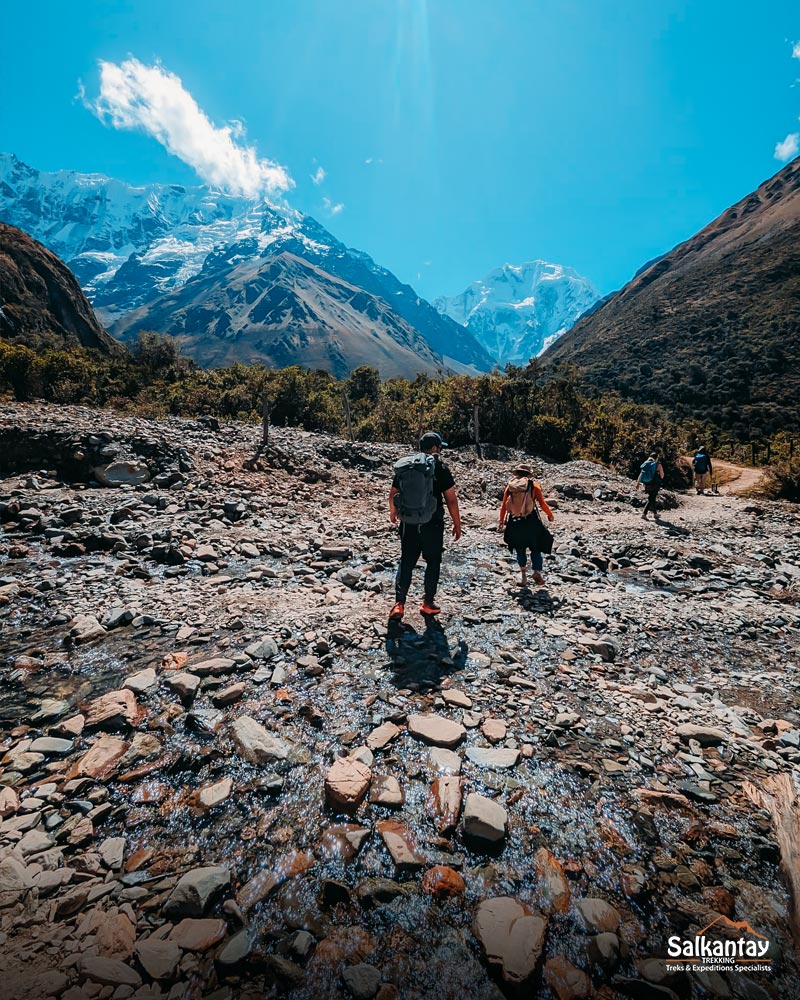
Where is Mount Salkantay Located?
Salkantay is one of the most imposing mountains in the Cusco region, in southern Peru. Its summit rises to 6,271 meters above sea level (20,574 feet) — an essential fact for those searching for Salkantay Trek height. Its majesty and natural beauty make it a dream destination for travelers, hikers, and explorers planning the Salkantay Trek to Machu Picchu.
Located about 100 kilometers northeast of the city of Cusco (62 miles), it is part of the Vilcabamba mountain range. It stands out among the highest peaks in the region. Its glacial landscapes and snow-capped summits offer breathtaking views at any time of year, making it a highlight on any Salkantay Trek map.
A Key Point on the Route to Machu Picchu
Salkantay is also a place filled with cultural and historical significance. For the Andean communities, this mountain is an Apu or protective spirit. Its snowy silhouette has been venerated for generations over the centuries.
Completing the Salkantay Trek requires good physical preparation and planning. The altitude and distance demand endurance and prior acclimatization, which is why a reliable Salkantay Trek guide is highly recommended. Compared to the Salkantay Trek vs Inca Trail option, Salkantay offers a wilder, less crowded experience. However, the reward is an unforgettable adventure in one of Peru’s most spectacular landscapes — a true alternative to the classic Inca Trail, ending in Machu Picchu Salkantay Trek style.
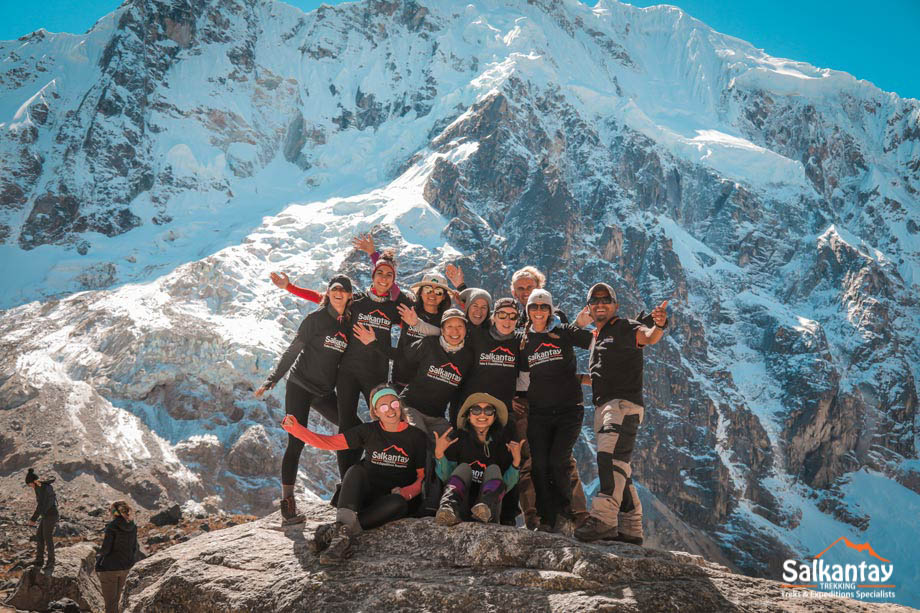
History and Significance of Mount Salkantay
The name Salkantay comes from Quechua and means “wild mountain” or “untamable mountain.” The word Sallqa translates as wild or untamable. The term Antay can refer to the Andes or to “that which produces avalanches.”
Since ancient times, Salkantay has been revered by Andean cultures. The Incas considered it an Apu or protective spirit of great power. Its presence commanded respect and guided the lives of nearby communities.
In the Andean worldview, the Apus protect nature and people. Salkantay was invoked in rituals to request abundant harvests and protection. These traditions are still alive today in the high-Andean communities, offering cultural depth to any Salkantay Trek tour operators itinerary.
A Living Spiritual and Cultural Legacy
Beyond its sacred importance, Salkantay played a key role in the history of Andean routes. It served as a reference point for travelers, herders, and traders. Its slopes and mountain passes connected different villages along the range, paths that now form part of the modern Salkantay Trek Machu Picchu route.
Although it is not part of the classic Inca Trail, the Salkantay Trek a Machu Picchu has become one of the most popular alternatives. It offers spectacular landscapes, deep cultural immersion, and hiking days steeped in history and local legends. For those planning their Salkantay Trek packing list, expect diverse climates, from snow-capped peaks to lush cloud forests.
Today, Salkantay is a symbol of Peru’s cultural and natural wealth. Its snow-covered summit inspires respect and admiration in all who behold it. Walking its trails means stepping into centuries of living history — a journey that perfectly combines adventure, culture, and nature in the Machu Picchu Salkantay Trek experience.
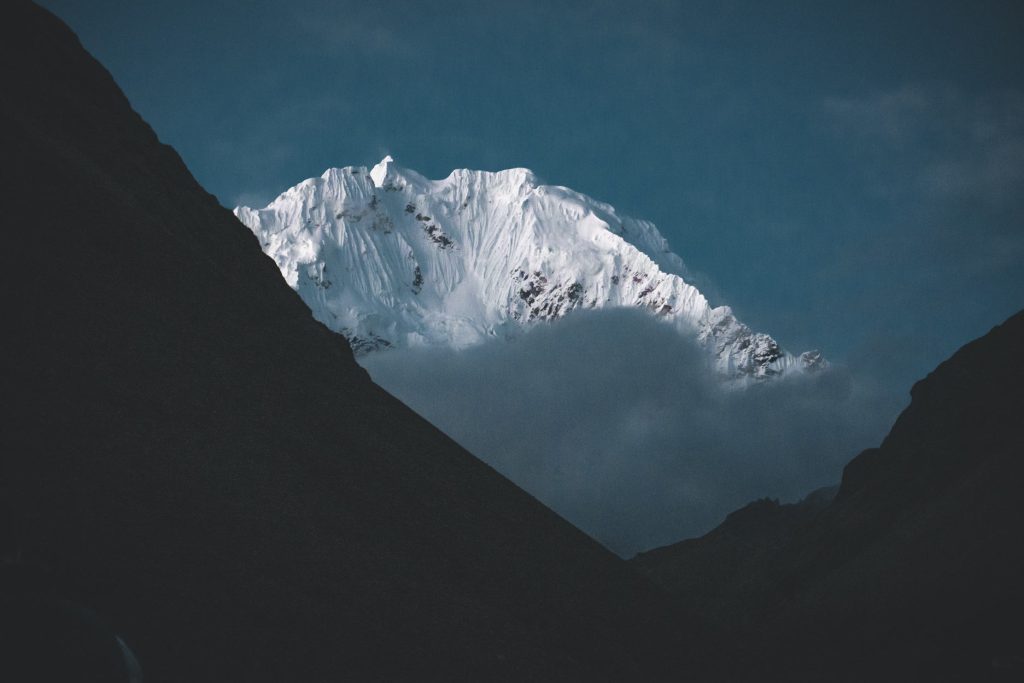
How hard is the Salkantay trek to Machu Picchu?
The Salkantay Trek difficulty is what makes this adventure so rewarding and enriching. While not an easy route, the difficulty is relative and can vary depending on an individual’s physical condition, prior preparation, and mental attitude.
The Salkantay Trek involves a mix of terrains, ranging from steep slopes to rocky paths and abrupt climate changes due to the varying altitudes and ecosystems it crosses. Ascents and descents can challenge your muscles and endurance, especially during the higher-altitude stages.
Salkantay Trek Altitude
The highest point of the Salkantay trail, the Salkantay Pass, is at an elevation of approximately 4,600 meters above sea level (15091 ft), which can pose a challenge for those not acclimated to the altitude.
However, many individuals of various ages and fitness levels have completed the Salkantay trail. The key to tackling the difficulty is proper physical preparation beforehand and maintaining a positive and resilient mindset.
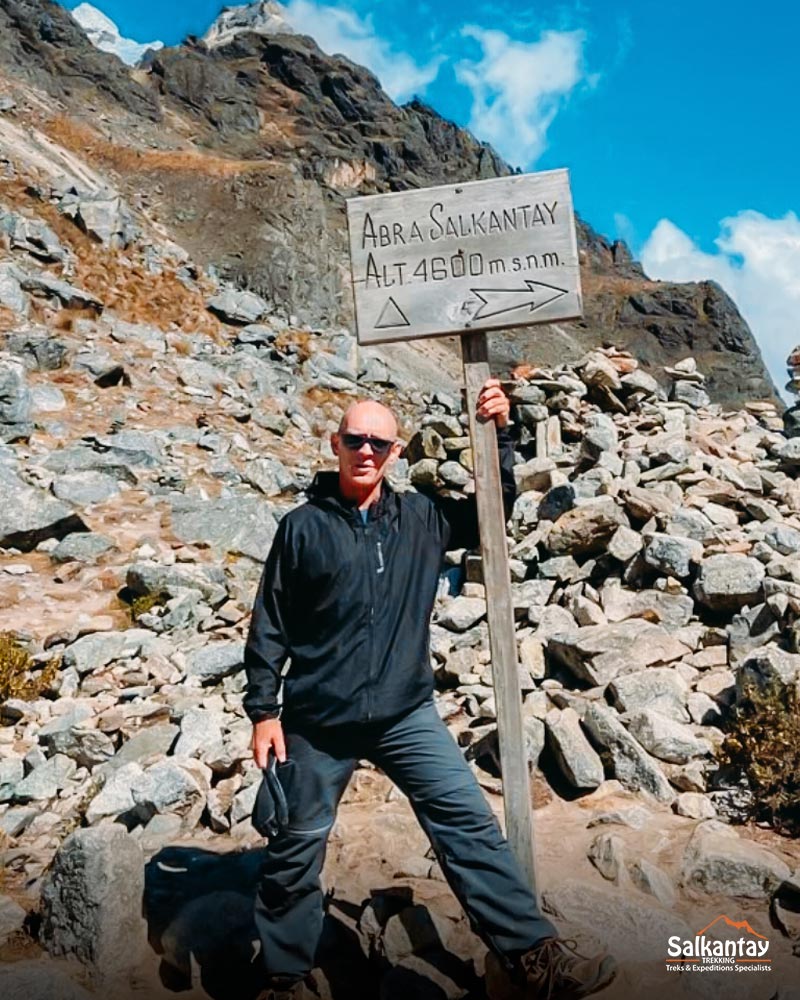
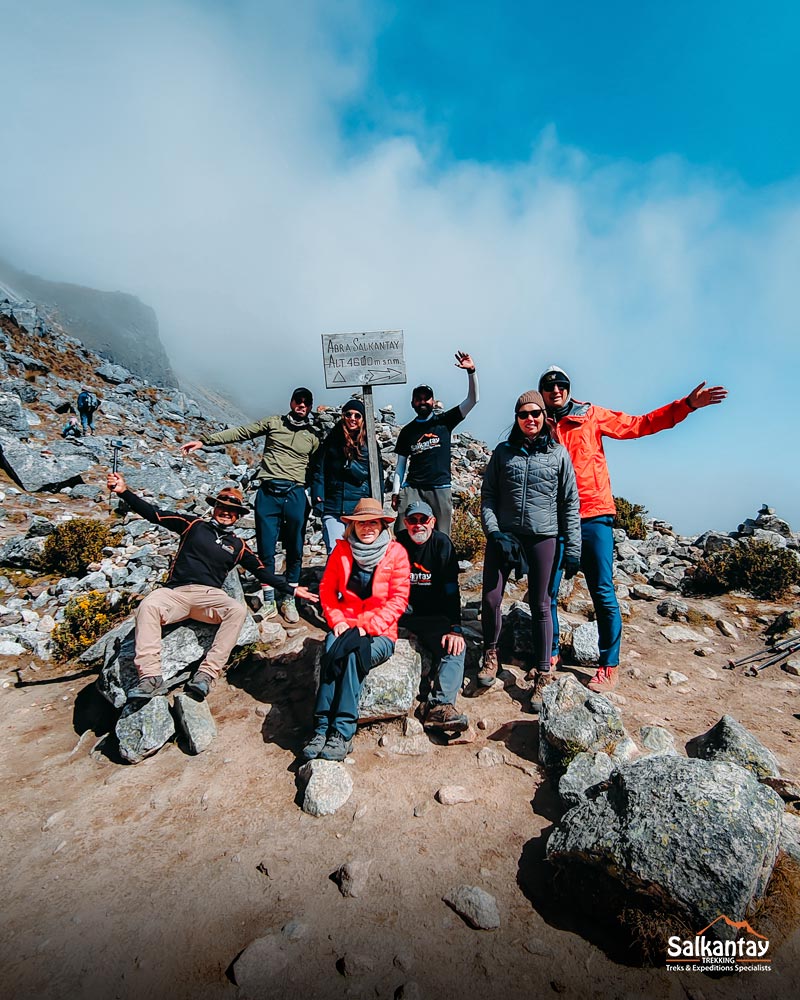
Is Acclimatization Necessary for the Salkantay Trek?
Acclimatization is a crucial step before embarking on any high-altitude adventure. Ignoring this process can lead to uncomfortable and challenging experiences.
The Salkantay trek altitude presents unique challenges to the human body as oxygen levels decrease with elevation. Imagine being halfway through the journey and feeling unwell due to the altitude. This would affect your well-being and disrupt the group’s plans and overall enjoyment of the experience.
Therefore, recognizing the importance of acclimatization and taking this process seriously before your trip is essential. Doing so’ll ensure a safer, more enjoyable, and memorable experience at every excursion stage.
Altitude Sickness on the Salkantay Trek, Peru
If you’re not adequately prepared, you might experience symptoms such as nausea, headaches, fatigue, dizziness, and difficulty breathing due to the altitude of the Salkantay Trek. Here are some strategies to ensure you’re ready to face the altitude during the Salkantay trek:
- Consult a doctor in your country to assess the possibility of obtaining altitude sickness medication as a preventive measure.
- Once in Cusco, oxygen canisters and pills are available at pharmacies if needed.
- Try coca or muña tea, infusions used since the Incas and known for their effectiveness in alleviating the effects of altitude.
- In Cusco, take things slow initially. Limit alcohol consumption and avoid excesses. Proper rest will contribute to your acclimatization.
- Plan to spend 2-3 days in Cusco or the Sacred Valley before starting the hike. This will allow your body to gradually adapt to the altitude before embarking on the trek to Machu Picchu.
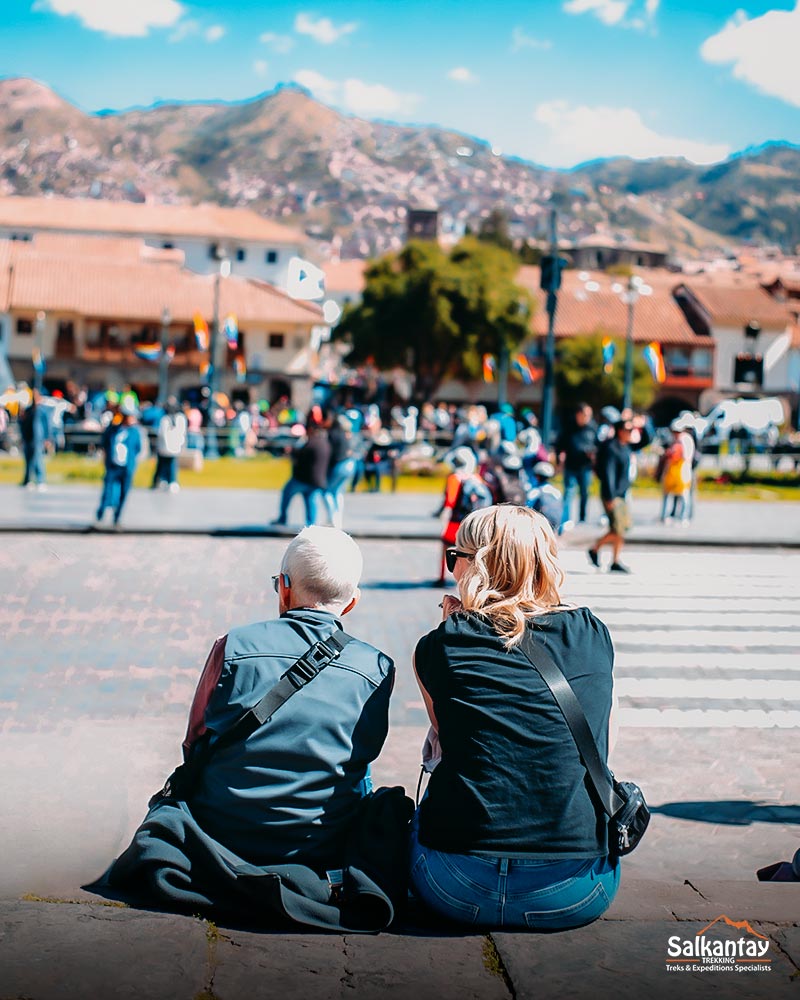

What to See and Do on the Salkantay Trek
Humantay Lake
The Salkantay Trek begins with a visit to the stunning Humantay Lake, located at the foot of the mountain of the same name. Its turquoise waters reflect the sky and surrounding peaks, creating a postcard-perfect landscape. The ascent takes approximately three hours round trip, but the breathtaking view and the energy of the place reward every minute of effort. For those planning their Salkantay Trek packing list, a camera is a must to capture this iconic stop on the Salkantay Trek map.
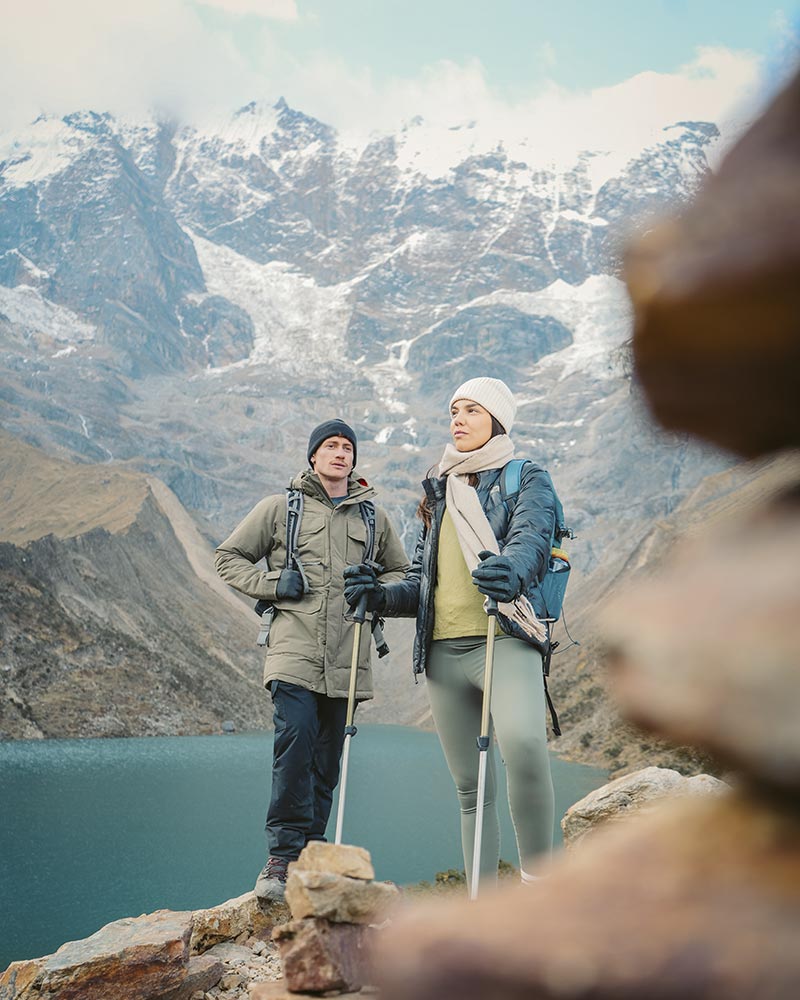

Salkantay Pass and Mount Salkantay
Further along, the undisputed highlight is the majestic Mount Salkantay, with an official Salkantay Trek height of 6,271 meters (20,574 feet). On the second day of the route, trekkers reach Salkantay Pass, located at 4,600 meters (15,091 feet). From here, travelers enjoy panoramic views of glaciers, snow-capped peaks, and a horizon that seems endless — one of the most memorable moments on any Salkantay Trek to Machu Picchu.
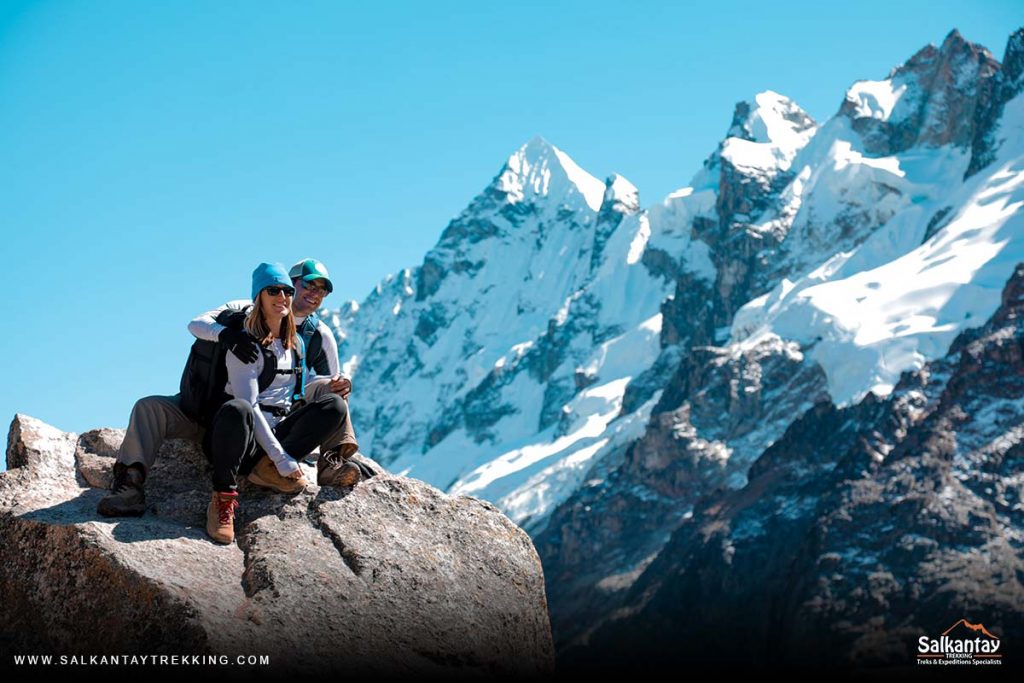
Sleeping Under a Starry Sky: Sky Camp
In Soraypampa (3,900 meters / 12,795 feet), Sky Camp offers an exclusive glamping experience. Its glass-domed structures allow 360° views of the night sky and the imposing silhouettes of Salkantay and Humantay. Comfortable beds, thermal insulation, and the tranquility of the mountains provide a restorative rest after a day on the Salkantay Trek.
Since 2016, this pioneering camp has blended nature and comfort, making it a favorite for many Salkantay Trek tour operators. The panoramic dining dome serves gourmet Andean cuisine prepared by expert chefs. During dinner, guests can watch the stars illuminate the sky while the snowy peak glows under the moonlight. Even on cloudy nights, the mountain atmosphere and the warmth of the fireplace create a magical memory.
For more details, see our blog: “Why Sky Camp is a Unique Experience in Peru” — perfect reading for anyone following a Salkantay Trek guide.


Cloud Forest and Coffee Plantations
After descending from the pass, the Salkantay Trek enters the cloud forest, with waterfalls, rivers, and lush vegetation. The Santa Teresa Valley is renowned for its organic coffee plantations, where visitors can learn the cultivation, roasting, and tasting process. Sipping a freshly brewed cup, surrounded by mountains, is an authentic experience that enriches any Salkantay Trek Machu Picchu journey.
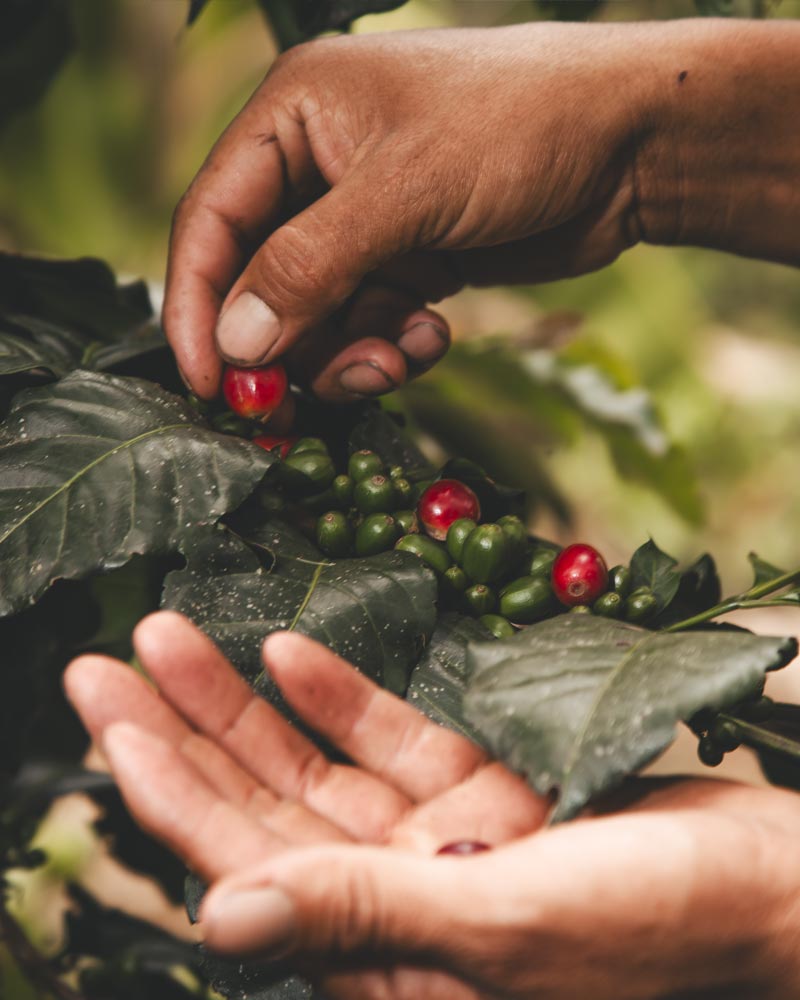
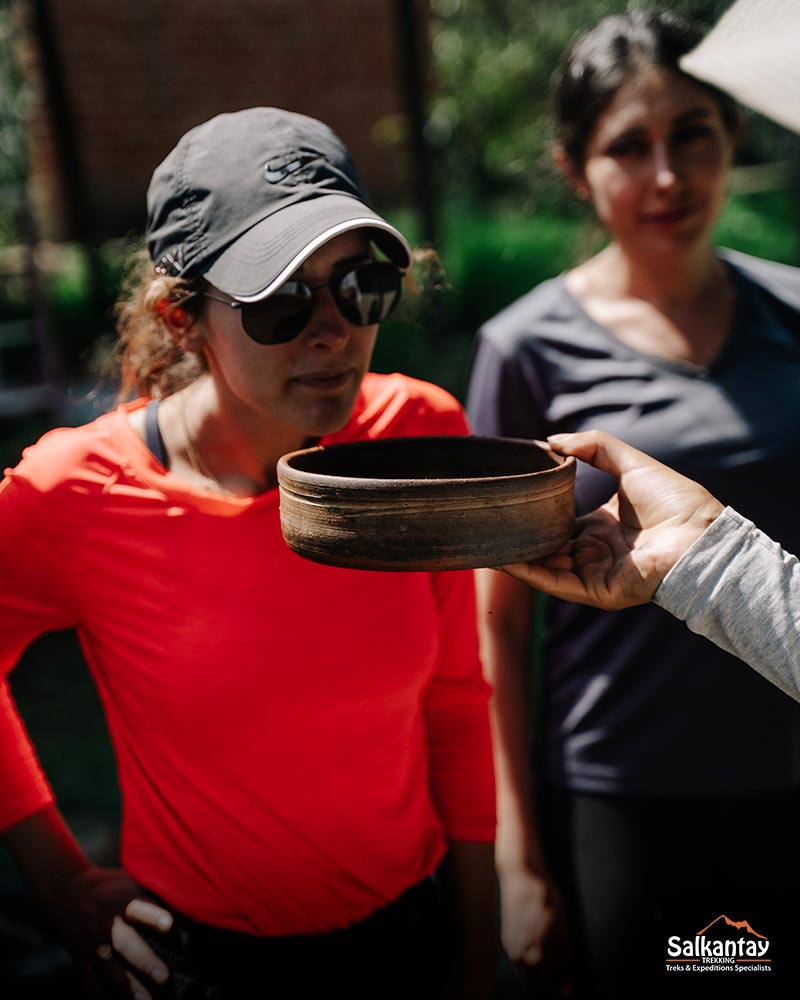
Culture, History, and Final Relaxation
Some itineraries include the Llactapata archaeological site, a citadel and control center in the ancient Qhapaq Ñan network. It offers a privileged view of Machu Picchu before the final approach. Another option is to relax in the Cocalmayo hot springs, a perfect recovery after several days on the Machu Picchu Salkantay Trek.
The route culminates in Machu Picchu, where every step taken makes the arrival unforgettable. Whether you choose the Salkantay Trek vs Inca Trail option or combine both routes, the reward is equally spectacular.
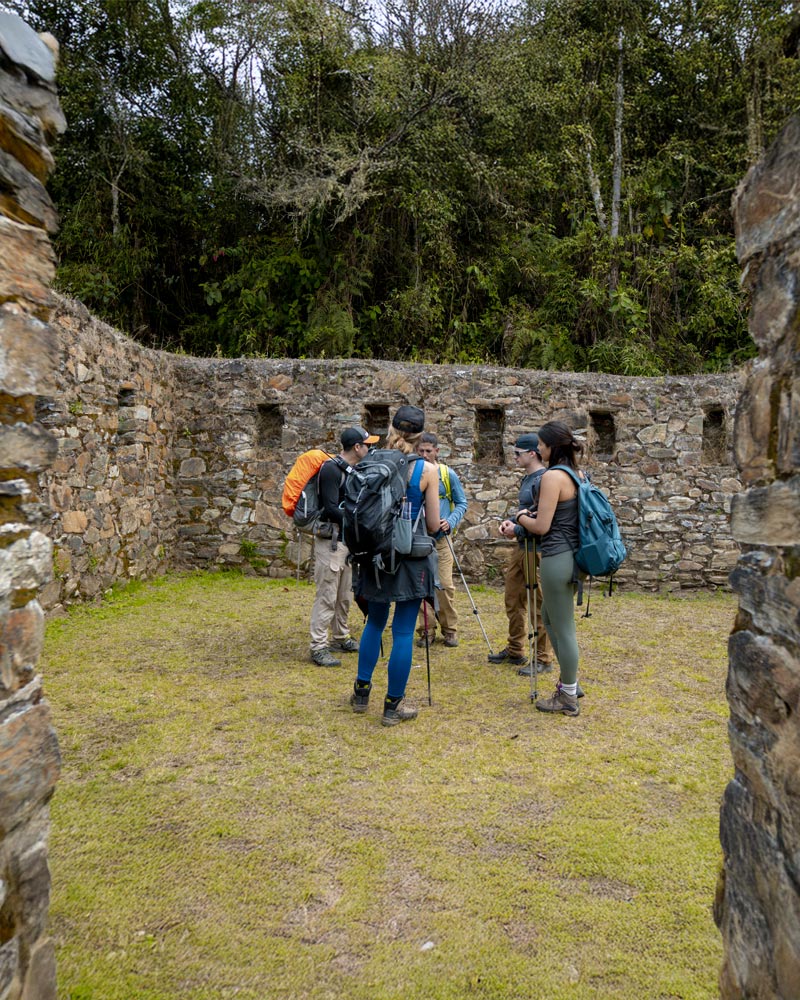
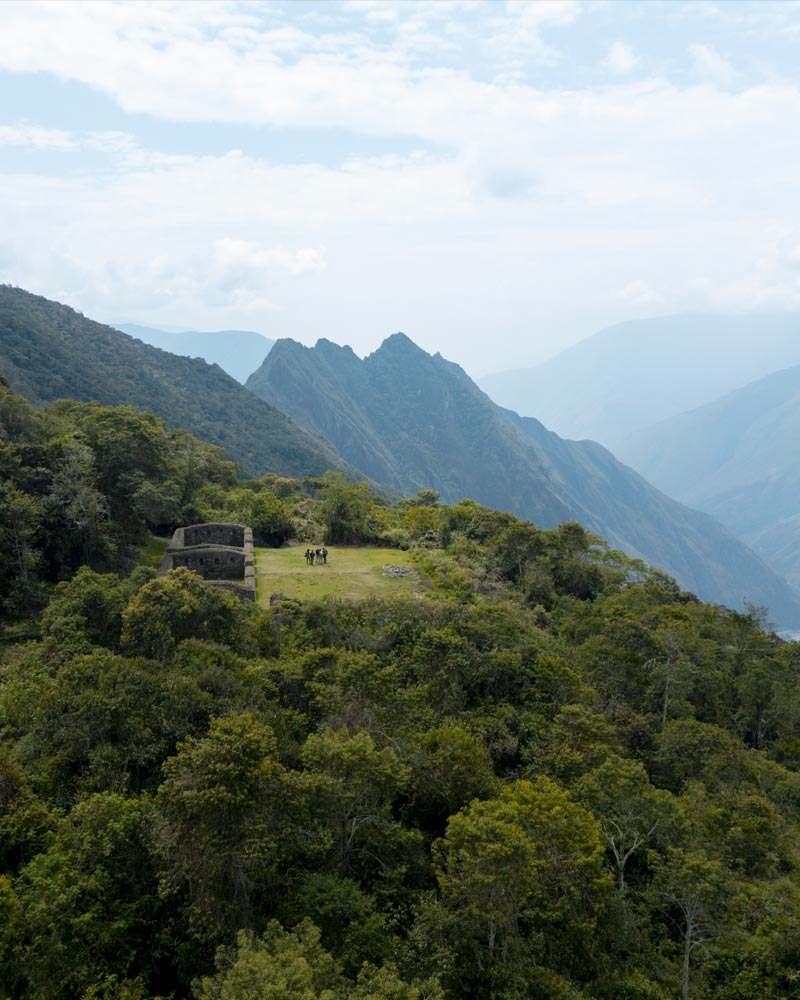
When Is the Best Time to Go
The best time for the Salkantay Trek a Machu Picchu is during the dry season (May to October). Clear skies and low rainfall create ideal trekking conditions. Trails are safer, views are sharper, and landscapes are at their most dramatic.
From November to April, the rainy season brings frequent showers, which can make the route more challenging. However, the scenery becomes greener and more vibrant — a detail some Salkantay Trek guide itineraries highlight for photography lovers.
Weather Conditions on the Salkantay Trek
The Salkantay Trek passes through diverse ecosystems, so the weather can change drastically in a single day. High mountain passes bring cold nights, requiring warm layers on your Salkantay Trek packing list, while the descent to the cloud forest brings humid, milder conditions.
June, July, and August offer the most stable weather but attract the most visitors. April and September are quieter yet equally stunning. No matter the month, planning with experienced Salkantay Trek tour operators ensures a smoother experience and better adaptation to altitude.
The Salkantay Trek to Machu Picchu always guarantees unforgettable landscapes, a deep cultural connection, and a sense of achievement few other treks can match.
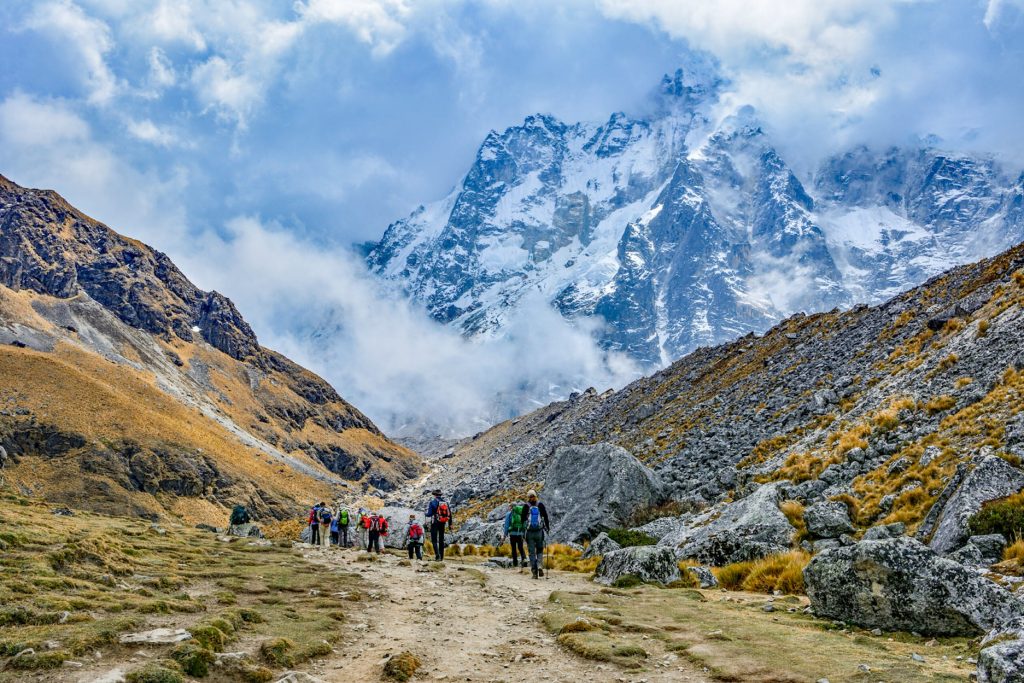
How to Prepare? Tips for Completing the Salkantay Trek
The Salkantay trail presents a relatively high-difficulty level, so we recommend preparing adequately, especially regarding physical fitness. While prior hiking experience is not a requirement, following these tips will enable you to approach it with greater confidence and success:
- Proper Footwear: Avoid using new boots for the hike. Make sure your hiking boots are well-worn and comfortable. If you’ve purchased new ones, wear them several times before the trip to ensure they fit your feet.
- Hiking Practice: Take short hikes in your local area and gradually increase their duration. Long weekends are ideal for consecutive days of hiking, simulating the conditions of the hike. Explore varied terrains to familiarize yourself with different types of surfaces.
- Pole Training: If you plan to use trekking poles during the hike, practice with them at home to get accustomed to their use and technique before the trip.
- Hill and Mountain Training: Include uphill training on hills and mountains in your routine. This will help you adapt to the inclines you’ll encounter during the hike.
- Muscular Strength and Cardio: Incorporate strength exercises and cardiovascular training into your preparation. Strengthening your muscles and improving your physical endurance will make handling strenuous exercise during the hike easier.
- Simulate Conditions: If possible, train in conditions similar to those you’ll encounter on the hike. This might include wearing a weighted backpack to get used to carrying gear.
- Mindset and Motivation: Prepare your mind for the challenge. Keep a positive attitude, set goals, and remember the reasons why you decided to undertake this adventure.


Leg Exercises for Training
Here are a few if you need help developing exercises to strengthen your leg muscles. Try to include some repetitions each day when you have free time.
- Lunges
- Deadlifts
- Back Squats
- Front Squats
If you want to prepare your body and mind for a high-altitude trek in the Andes, I recommend reading the blog “High-Altitude Adventure! How to Train to Enjoy Trekking in Peru”. You will find practical tips on physical tests, essential gear, and nutrition and hydration habits that will help you perform better on routes like the Salkantay Trek.
What Level of Physical Fitness is Required for the Salkantay Trek?
As most participants do, it’s essential to be healthy and have adequate physical fitness to complete the Salkantay Trek. You don’t need to be an experienced athlete or train constantly, but we recommend some prior physical preparation.
Most people can overcome this challenge by eating well, preparing in advance for the physical demands and altitude, and engaging in some hiking as part of their preparation. Your ability to complete the Salkantay trek will benefit from proper nutrition, training, and familiarity with hiking.
Physical Requirements
The main physical requirements needed to participate in this trekking are:
- Being in good mental and physical shape
- Having strong leg muscles
- Not having respiratory health issues
- Maintaining a healthy diet and avoiding harmful substances

How to Eat for the Salkantay Trek to Machu Picchu?
Nutrition is crucial in preparing for the Salkantay trek to Machu Picchu. Here are some guidelines for maintaining a balanced and appropriate diet before and during the hike:
Before the Hike:
- Hydration: Drink enough water in the days leading up to the hike to ensure you’re well hydrated. Hydration is essential to cope with altitude and physical effort.
- Carbohydrates: Consume carbohydrate-rich foods like bread, rice, pasta, and cereals. Carbohydrates provide sustained energy for prolonged exercise. Proteins: Include protein sources like chicken, fish, legumes, and eggs.
- Proteins aid in muscle recovery and energy maintenance.
- Fruits and Vegetables: Make sure to get a variety of fresh fruits and vegetables for essential vitamins and minerals.
During the Hike:
Energetic Snacks: Bring carbohydrate and protein-rich snacks like granola bars, dried fruits, nuts, and energy snacks. These will provide energy during breaks.
- Constant Hydration: Carry a water bottle and consistently hydrate during the hike.
- Light Meals: Opt for light yet nutritious meals during meal breaks. Avoid heavy meals that could hinder digestion.
- Electrolyte Replenishment: With water, drink sports drinks or consume foods with sodium and potassium content to maintain electrolyte balance.
- Avoid Overeating: While consuming enough calories and nutrients is essential, avoid overeating before walking, as it could cause discomfort.
Master the Salkantay Trek Challenge
Preparing for the challenging Salkantay Trek combines physical, mental, and nutritional care. From strengthening your muscles to acclimating to the altitude and maintaining a balanced diet, every step you take before the hike will bring you closer to an unforgettable experience in the majestic Peruvian mountains.
Remember that the Salkantay Trek is a physical adventure and a personal journey connecting you with nature, culture, and your limits. So, before you start your trek, ensure you’ve consciously completed your training, acclimatization, and dietary choices.

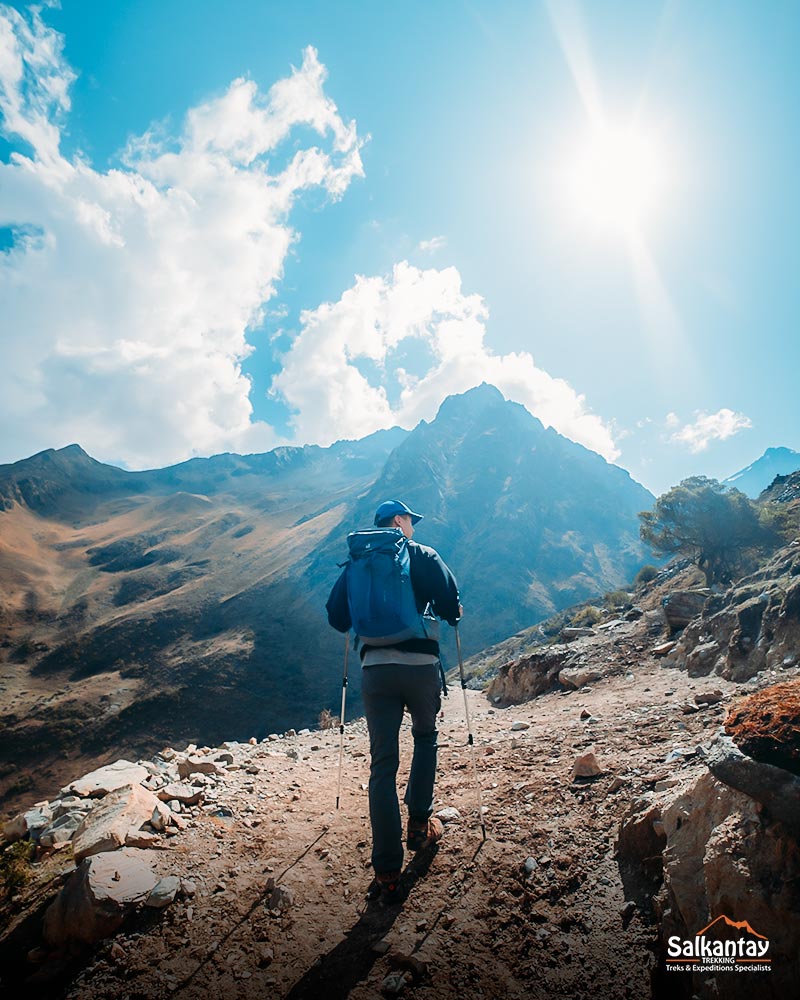
Alternatives to the Salkantay Trek
If you are looking for different ways to reach Machu Picchu besides the Salkantay Trek, consider these options that combine adventure, culture, and unique landscapes:
- The Classic Inca Trail is the most famous route, covering about 42 km over four days and three nights. It offers stone-paved paths, historic passes, and ancient ruins, but requires booking well in advance.
- The Inca Jungle Route combines hiking with mountain biking, zip-lining, and high jungle exploration—ideal for those seeking adrenaline along with diverse landscapes.
- The Lares Trek offers an intense cultural experience: weaving communities, hot springs, and mountain passes, with fewer crowds and a more accessible route.
- Cultural alternatives like Ancascocha or the archaeological walk to Huchuy Qosqo involve less physical effort, shorter hikes, and views of lagoons or archaeological sites, making them an ideal complement to your trip.
Each route has its own character: some stand out for their history, others for their flora, fauna, or living culture. The best choice depends on your physical condition, available time, and the type of adventure you want to experience.
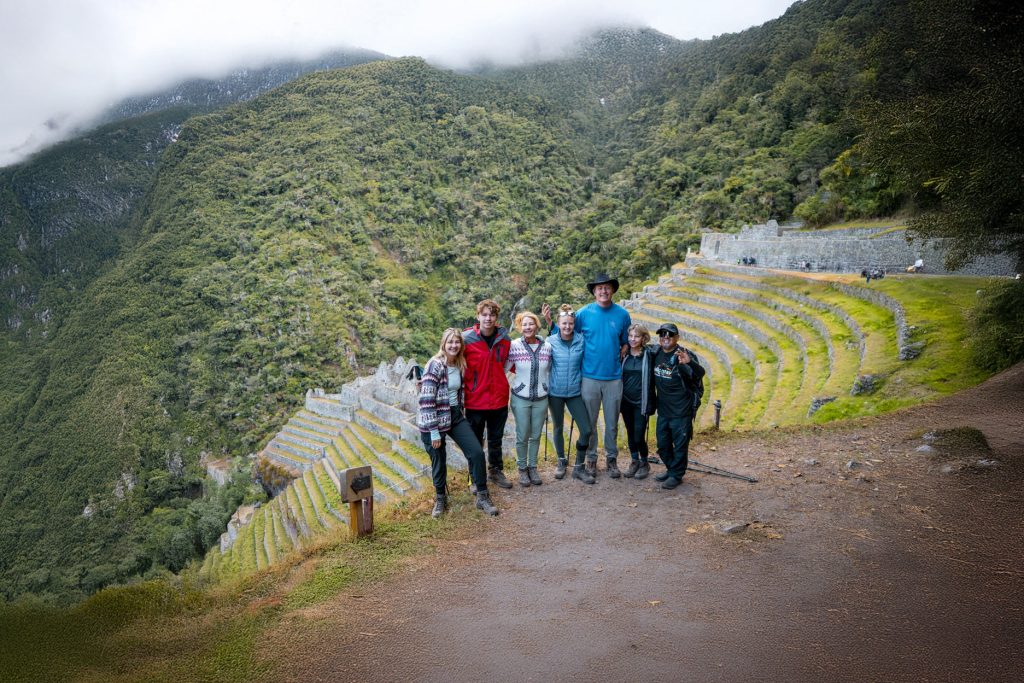
Frequently Asked Questions about the Salkantay Trek
1. What is the total distance of the Salkantay Trek?
The Salkantay Trek covers between 70 and 75 kilometers (43 to 46 miles), depending on the chosen route. It is usually completed in four or five days of hiking. The final stretch ends at Machu Picchu, making it an unforgettable Machu Picchu Salkantay Trek experience.
2. What is the maximum altitude reached on the trek?
The highest point is the Salkantay Pass, at an impressive Salkantay Trek height of 4,650 meters above sea level. Proper acclimatization is essential to avoid altitude sickness, even for those in excellent shape.
3. Is it necessary to hire a guide for the Salkantay Trek?
While not mandatory, hiring a certified guide is highly recommended for safety and cultural enrichment. A Salkantay Trek guide provides valuable cultural and natural insights and manages logistics, transport, and accommodation during the journey.
4. What level of fitness is required?
The Salkantay Trek demands a moderate to high level of fitness. The trail includes challenging ascents and long descents that test endurance. Training beforehand will improve your experience and reduce the risk of injury.
5. When is the best season to do it?
The dry season, from May to October, is ideal due to stable weather conditions. Rain is less frequent, and the views are clearer—perfect for both the Salkantay Trek vs Inca Trail comparison and camping.
6. How long should I acclimatize before starting the trek?
It is advisable to spend at least two days in Cusco before starting. This reduces the risk of altitude sickness at the Salkantay Trek height. It also gives you time to explore the city’s historic sites.
7. What accommodation options exist along the route?
You will find basic campsites, panoramic domes, and lodges with additional services. In Aguas Calientes, hotels range from budget to luxury. Booking early ensures availability, especially during peak season.
8. Is it necessary to book far in advance?
Yes—especially in high season when demand is high. Machu Picchu entry tickets are limited daily, and transport and some accommodations also sell out quickly.
9. What should I pack for the Salkantay Trek?
A complete Salkantay Trek packing list includes clothing for cold, warm, dry, and wet conditions: a waterproof jacket, fleece, comfortable pants, and a light day pack. Also carry personal documents, energy snacks, and water.
10. How many days does the Salkantay Trek last?
The classic Salkantay Trek to Machu Picchu lasts five days and four nights. A shorter four-day, three-night version exists for those with limited time. Choose according to your fitness level and schedule. Visit our website to explore all our Salkantay Trek tour operators and available packages.
11. Is the Salkantay Trek dangerous?
The Salkantay Trek Machu Picchu presents challenges due to altitude, uneven terrain, and changing weather. However, it is safe if you acclimatize properly, maintain a steady pace, and train in advance. Many complete the Salkantay Trek a Machu Picchu successfully following expert recommendations.
Live the experience of a lifetime and connect with the most spectacular Andean landscapes. Book your spot today for the Machu Picchu Salkantay Trek and secure your place in this unforgettable adventure.
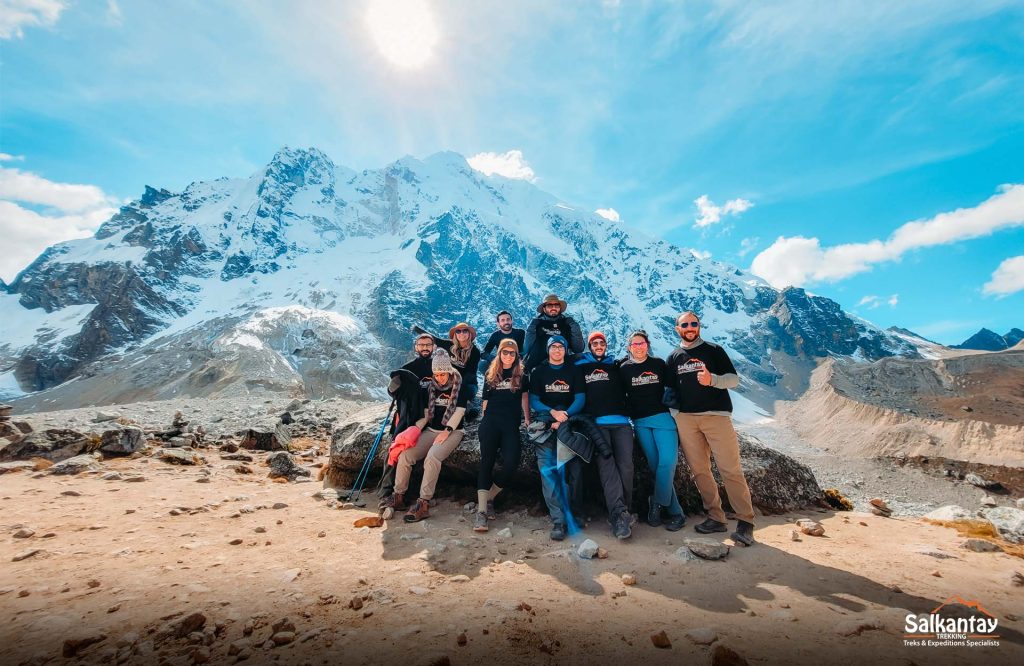
You may be interested in:
- Exploring the Unknown: Salkantay Premium Trek, 5 Days of Adventure
- Salkantay Trekking: The Best Tour Operator in Peru
- Trekking Routes in Cusco: Following the Wisdom of the Summits
- Adventure at Altitude! How to Train to Fully Enjoy Trekking in Peru
- Salkantay Mountain: The Complete Guide.
- Salkantay Trek vs Inca Trail: Which is the Best Trek to Machu Picchu?

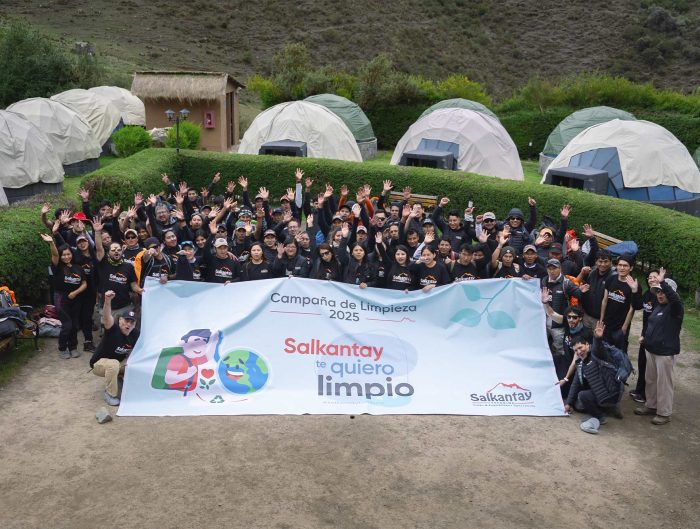
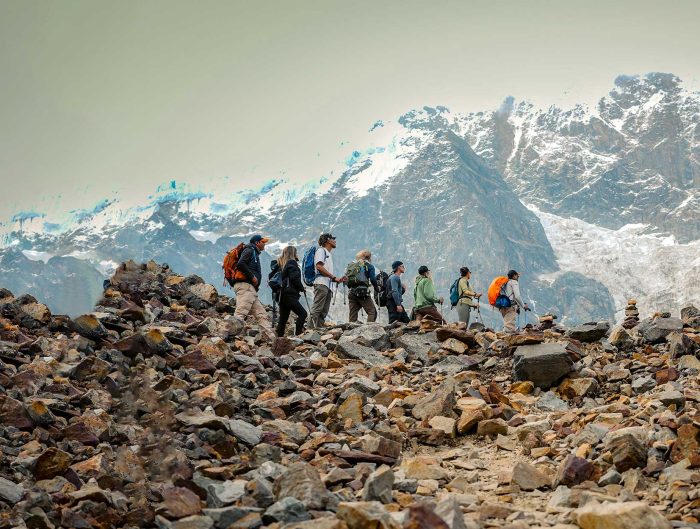
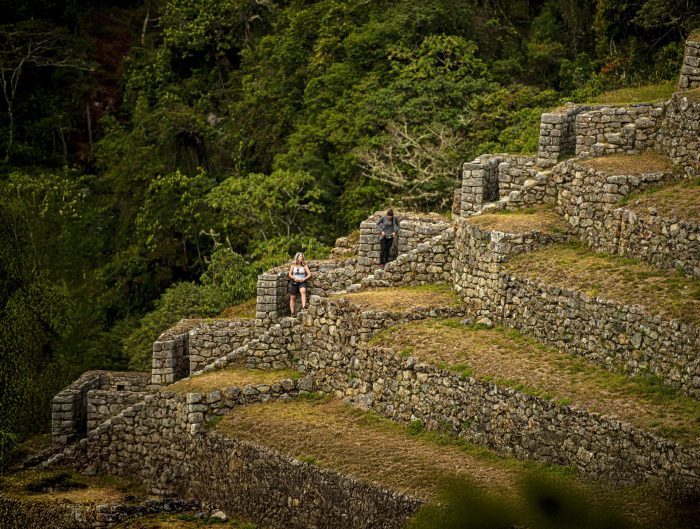
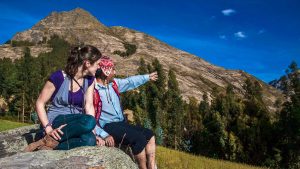
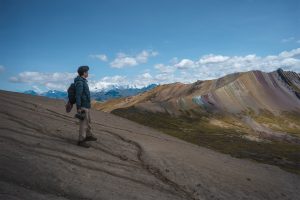
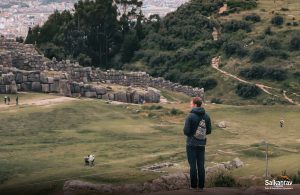
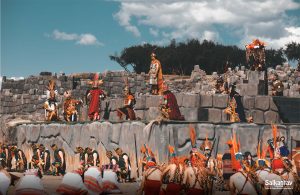

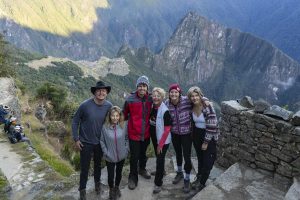
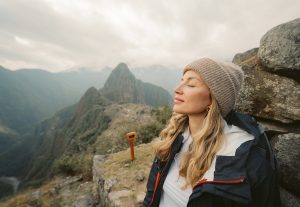
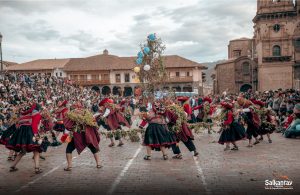


Leave A Reply